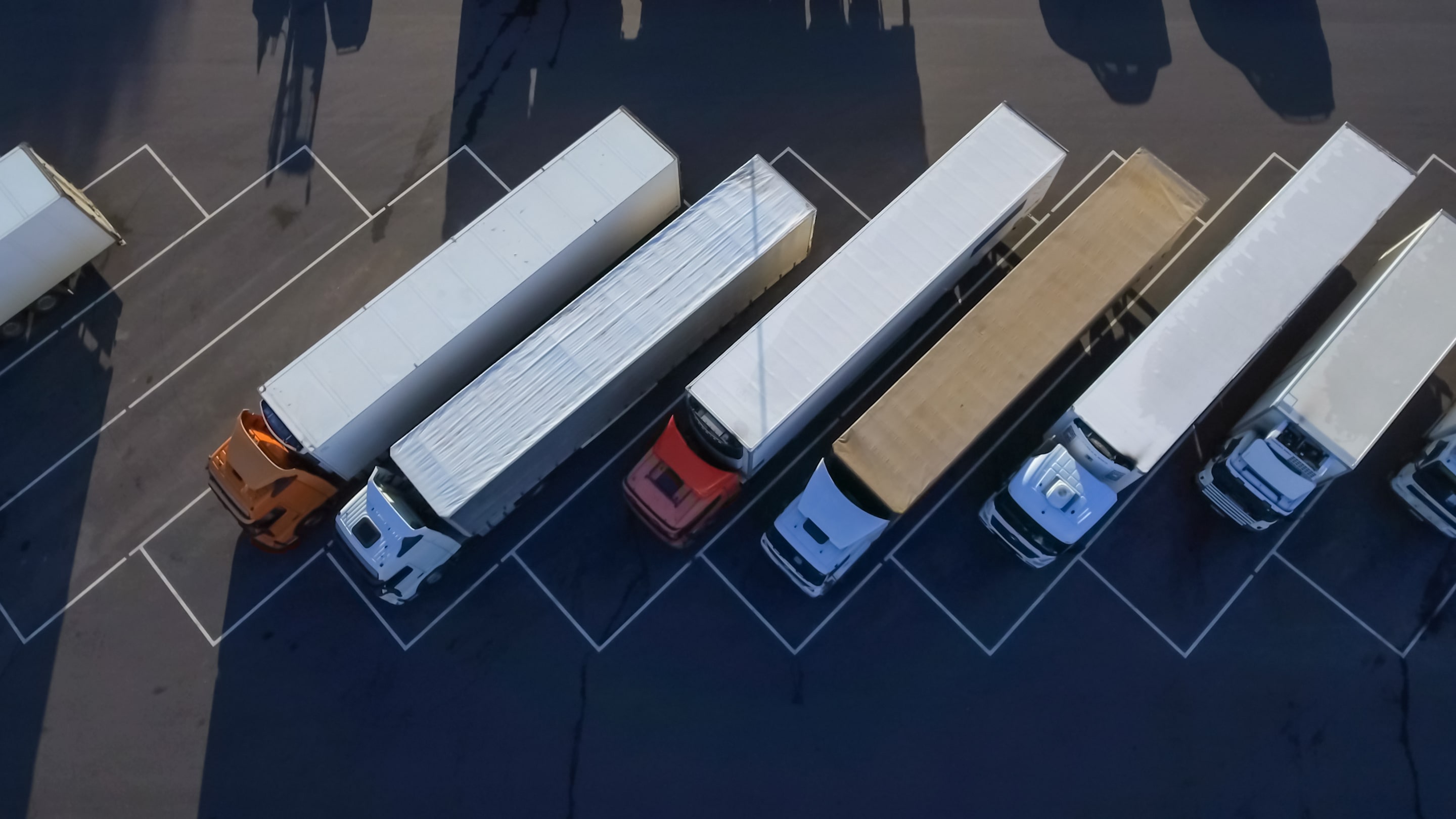
Guest
Håndtering af manglen på lastbilchauffører i Storbritannien i 2024/2025
Oprettet: 16.08.2024
•
Opdateret: 10.10.2024
Manglen på lastbilchauffører i Storbritannien har været en kompleks og mangefacetteret udfordring med vidtrækkende konsekvenser for landets økonomi og forsyningskæder. Regeringens, industriens og interessenternes fælles indsats er dog begyndt at give positive resultater, hvilket tyder på, at tidevandet måske er ved at vende.
Når Storbritannien ser frem mod 2024 og 2025, vil det fortsatte engagement i at afhjælpe chaufførmanglen sammen med et fokus på at tiltrække og fastholde talentfulde personer være afgørende for at sikre transportsektorens langsigtede modstandsdygtighed og velstand.
Krisens dybde
Manglen på lastbilchauffører i Storbritannien har været en voksende bekymring, og situationen nåede et kritisk punkt i 2021. Ifølge brancherapporter manglede landet omkring 100.000 lastbilchauffører, da krisen var på sit højeste. Dette tal repræsenterede en betydelig stigning fra den 59.000 chaufførmangel, der blev rapporteret i 2019, hvilket understreger den hurtige forværring af situationen.
De faktorer, der bidrog til denne mangel, var mangesidede, herunder virkningen af COVID-19-pandemien, eftervirkningerne af Brexit og ændringer i IR35-skattereglerne, som påvirkede lastbilchauffører, der var ansat af bureauer på freelancebasis. Disse forstyrrelser førte til, at mange erfarne chauffører forlod branchen, mens der ikke kom nok nye talenter ind på markedet til at udfylde tomrummet.

Regeringens indgriben og branchens indsats
I erkendelse af situationens alvor har den britiske regering og branchens interessenter taget afgørende skridt til at afhjælpe manglen på lastbilchauffører. Transportministeriet rapporterede om en bemærkelsesværdig forbedring, hvor procentdelen af ledige stillinger som lastbilchauffør rapporteret af transportvirksomheder faldt fra 43 % i 4. kvartal 2021 til 23 % i 3. kvartal 2023.
Et af de vigtigste tiltag var øget finansiering til at tiltrække og uddanne nye lastbilchauffører. Regeringen fremskyndede også processen med at få HGV-kørekort og investerede 8 millioner pund i at forbedre kvaliteten af HGV-rastepladser, hvilket løser det langvarige problem med dårlige arbejdsforhold for chauffører.
SNAP hjalp flere britiske lastbilparker med at ansøge om offentlige midler til at forbedre deres faciliteter. Få mere at vide om de [truck parks] (https://snapacc.com/map/), der er med i SNAP-netværket.
Håndtering af den aldrende arbejdsstyrke og tiltrækning af yngre talenter
En af de vedvarende udfordringer i lastbilchaufførbranchen er den aldrende arbejdsstyrke, hvor gennemsnitsalderen for chauffører er 48 år. Branchen har kæmpet for at tiltrække yngre talenter, da opfattelsen af dårlige arbejdsforhold, gennemsnitlige lønninger og en uinspirerende karrierevej har afskrækket mange fra at overveje en karriere som lastbilchauffør.
For at imødekomme dette har regeringen for nylig lanceret en høring om at sænke minimumsalderen for buschauffører, hvilket potentielt kan åbne op for flere muligheder for yngre personer for at komme ind i transportsektoren. Dette skridt kombineret med en indsats for at forbedre chaufførernes faciliteter og arbejdsforhold kan være med til at gøre branchen mere attraktiv for den næste generation af arbejdstagere.
Se kort over lastbilparkeringer, lastbilvaskepladser og overnatningssteder i forskellige regioner, der er dækket af SNAP-netværket.

Overvinde lovgivningsmæssige forhindringer og omfavne fleksibilitet
En anden faktor, der har bidraget til manglen på lastbilchauffører, er de lovgivningsmæssige forhindringer og det bureaukrati, som nye chauffører møder, når de kommer ind i branchen. Processen med at opnå de nødvendige licenser og certificeringer kan være tidskrævende og kostbar, hvilket afskrækker potentielle kandidater.
For at løse dette problem har branchens interessenter slået til lyd for mere fleksible uddannelses- og testprocedurer i lighed med den tilgang, som busselskaberne har valgt. Ved at strømline processen og gøre den mere tilgængelig håber man at kunne øge antallet af kvalificerede chauffører, der kommer ind på markedet.
Virkningen af Brexit og COVID-19
Manglen på lastbilchauffører i Storbritannien er blevet yderligere kompliceret af eftervirkningerne af Brexit og de forstyrrelser, som COVID-19-pandemien har forårsaget. Tabet af EU-chauffører, som tidligere udgjorde en betydelig del af Storbritanniens arbejdsstyrke inden for lastbilkørsel, har været et hårdt slag.
Derudover har pandemiens indvirkning på uddannelse og test resulteret i et efterslæb af nye chauffører, der kommer ind på markedet. Efterhånden som økonomien er kommet på fode igen, har den øgede efterspørgsel efter varer og tjenesteydelser lagt endnu større pres på den allerede pressede transportsektor.

Samarbejde og innovation
At afhjælpe manglen på lastbilchauffører kræver en samarbejdsindsats mellem regeringen, branchens interessenter og uddannelsesinstitutioner. Ved at arbejde sammen kan de udvikle omfattende løsninger, der tager fat på de grundlæggende årsager til problemet og skaber et mere bæredygtigt og modstandsdygtigt transportsystem.
Innovative tilgange, som f.eks. brug af teknologi til at optimere logistikken og forbedre chaufførernes effektivitet, kan også spille en afgørende rolle i at afbøde virkningen af chaufførmanglen. Investeringer i infrastruktur, uddannelsesprogrammer og chaufførfokuserede initiativer kan hjælpe med at opbygge en stærkere, mere mangfoldig og mere modstandsdygtig arbejdsstyrke.
Vejen frem
Når Storbritannien navigerer i det skiftende landskab med mangel på lastbilchauffører, er det klart, at løsningen kræver en mangesidet tilgang. Fortsat støtte fra regeringen, samarbejde med industrien og en forpligtelse til at tiltrække og fastholde talentfulde chauffører vil være afgørende for at sikre modstandsdygtigheden i landets transportnetværk.
Selv om krisen måske ikke bliver helt løst i den nærmeste fremtid, giver de skridt, der er taget indtil nu, et glimt af håb. Ved at fastholde fokus på innovation, fleksibilitet og rummelighed kan Storbritannien arbejde hen imod en fremtid, hvor transportsektoren er rustet til at imødekomme økonomiens voksende krav og borgernes behov.



